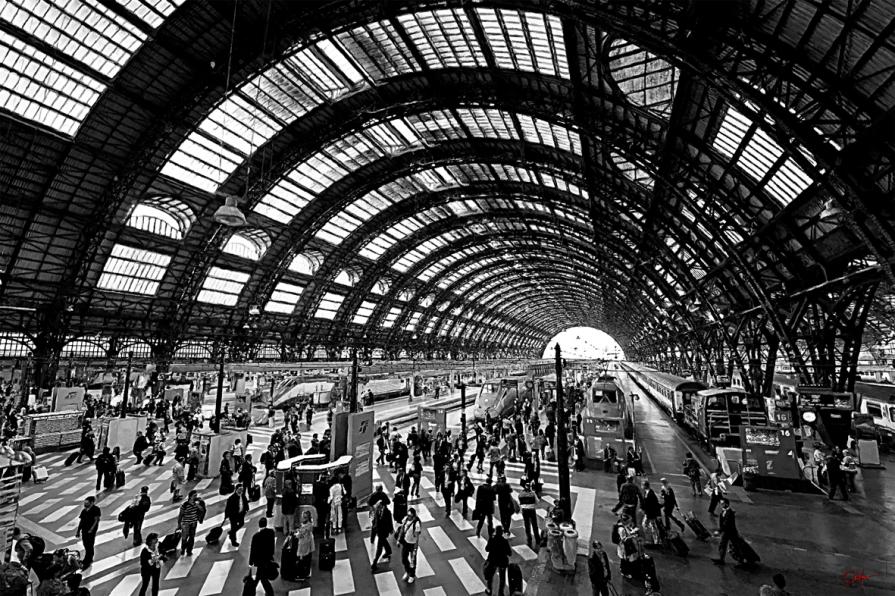
CENTRAL STATION MILAN
Using this innovative, digital, hyper-realistic style inspired by the master glassmakers of Venice, the artist painted each of the figures as if he used tiny tubes of acrylic colour, made stringy like melted glass, but depriving them of their own shadows to make them "emerge" from the pavement, almost raised by earth: the faces are unrecognizable while observing the work at one meter distance, but as soon as you leave back a few steps here appear "magically" the features of the eyes and nose that do not hide serene and joyful expressions.
The trains, now empty of their figures, are represented with less but decided strokes, taking more realistic shapes and vivid colours, marked with a few nuances.
To further increase the visual impact of this impressive altarpiece, the artist wanted to play voluntarily both on the perspective as on the three-dimensional coordinates to make it "live"; uses impressionism to play every single small metal component of the arch, reconstructing each Single shadow, while only for the paving disrupts the look with abstract strokes.
To note, at the two ends of the Opera, the use of millimeter sized brushes to almost wanting to "push" beyond the borders of the aisle, making it even more amazing the view of the most important Italian Train Station.
It is a '"duty" therefore to observe the work while walking from right to left without taking eyes away from the central train: the perspective is amazing, the work envelops you, accompanies you and it seems that everything is moving and everything is “magically alive”.
Doing so, the artist manages to transform his emotions in quick brush strokes that create an alternation of smooth and irregular surfaces: the background, the landscape, the objects are not something added, but wrap the figures that take unusual shapes with strong contrasts of light and shadow in an atmosphere that makes them unique in the wide-angle architectural urban beauty.















Comments 0
Say something